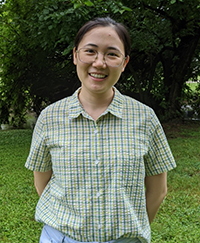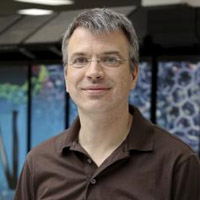UT’s Nuclear Physicists Part of Major DOE Quantum Initiative
Last week the U.S. Department of Energy announced that the university’s neighbor and partner, Oak Ridge National Laboratory, will lead a multidisciplinary collaboration to advance the promise of quantum science in avenues including new materials, algorithms, sensors, and storage. The Quantum Science Center, a $115 million project, supports the National Quantum Initiative Act of 2018 and includes partners from other national laboratories, the private sector, and academia. Among its goals is the developing the next generation of scientists and engineers, which is where the UT Physics Department comes in.

Physics graduate student Chenyi Gu (left) will be supported through the Center. She finished her undergraduate studies at Ocean University of China before joining the graduate program in 2017, and since 2018 has been working with Professor Thomas Papenbrock who’s also part of the ORNL Physics Division.
Gu will work on quantum-classical hybrid algorithms to advance the computation of atomic nuclei. The nucleus, a quantum system in its own right, is the core of an atom. Calculating its properties—the dynamics and energy of its composite protons and neutrons—helps scientists understand more about how it holds together or breaks apart. The simplest nucleus is the hydrogen atom, comprising a single proton. Yet the heavier nuclei become across the periodic table, the more interactions and properties there are to account for (Tennessine, for example, has 117 protons and 177 neutrons).
These many-body systems are among Gu’s research interests, as is using quantum computing for nuclear physics problems. She’s finishing a project with Papenbrock and collaborators Alessandro Roggero from the University of Washington and Alessandro Baroni and Joe Carlson from Los Alamos National Laboratory. It’s focused on using algorithms to prepare excited states on a quantum computer, a key initial step to study dynamics within linear response theory—how a system responds to outside influences like, for example, a magnetic field.
Papenbrock explained that the hybrid approach Gu will use in her QSC-sponsored research "means that we want some part of the problem to run and be solved on a quantum computer, while other parts that are not exponentially hard run on a classical computer. We will combine both results on a classical computer. The quantum part is reserved for operations that are exponentially hard but could perhaps be done in the not-so-distant future."

Papenbrock (pictured left) is familiar with this kind of research, as two years ago he and colleagues from ORNL (including Alex McCaskey, a UT physics alumnus) were the first scientists to successfully simulate an atomic nucleus using a quantum computer. They calculated the energy of a deuteron, the bound state of a proton and neutron.
"We do want to solve more complex nuclei," Papenbrock said, including "time evolution of quantum systems or ‘exact solutions’ of quantum systems. Both are exponentially hard problems, meaning they scale exponentially with increasing number of particles. One can do them easily for two or four particles but runs out of steam for more than 10."
Quantum computing has the potential to help solve problems like these, and programs like the Quantum Science Center are designed to advance the tools and assemble the expertise that will make it possible.
"Our goal is to build a research team representing diverse scientific and engineering disciplines and to focus their capabilities on advances in materials, computing and technology development," ORNL Director Thomas Zacharia said.
"The discovery and development of hybrid quantum algorithms that enable an understanding of the physics of nuclei, materials, and chemistry represents an exciting aspect of QSC’s research" QSC’s Director, David Dean said. "I am happy to have Thomas Papenbrock and Chenyi Gu as part of the Center."
With thanks to ORNL and DOE for information on the Quantum Science Center. Please read Oak Ridge National Laboratory’s official news release for more. Photo of Professor Papenbrock courtesy of ORNL.